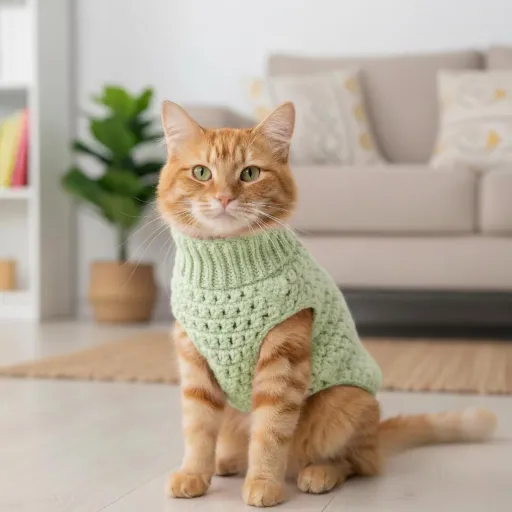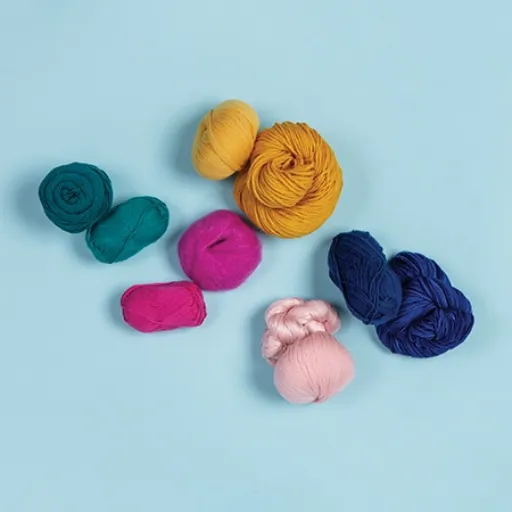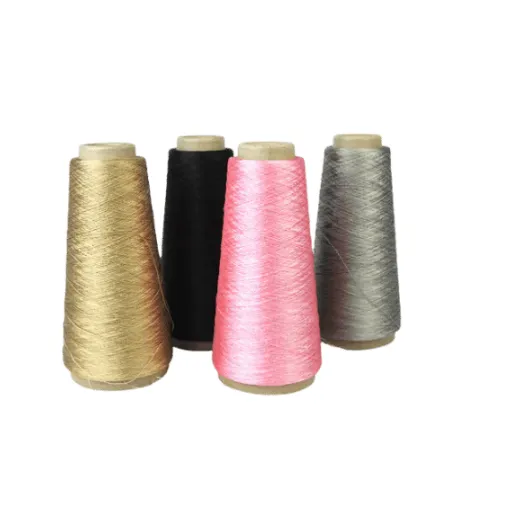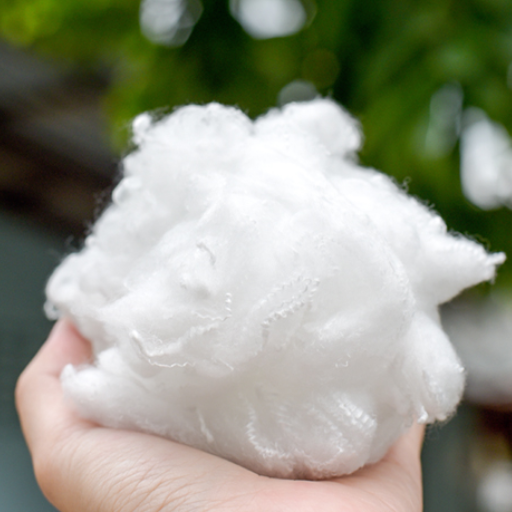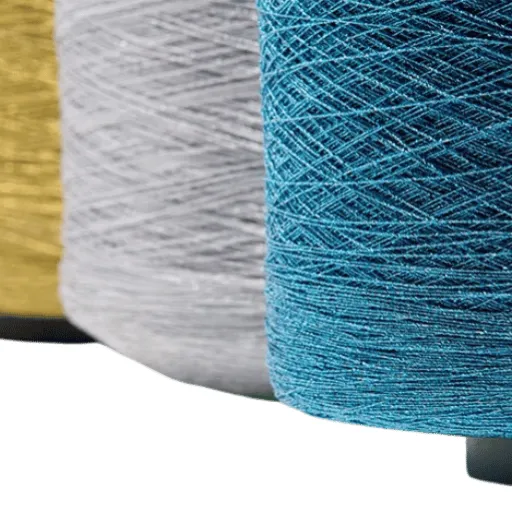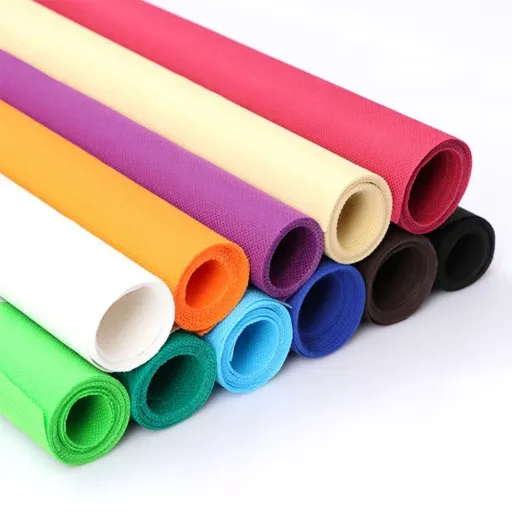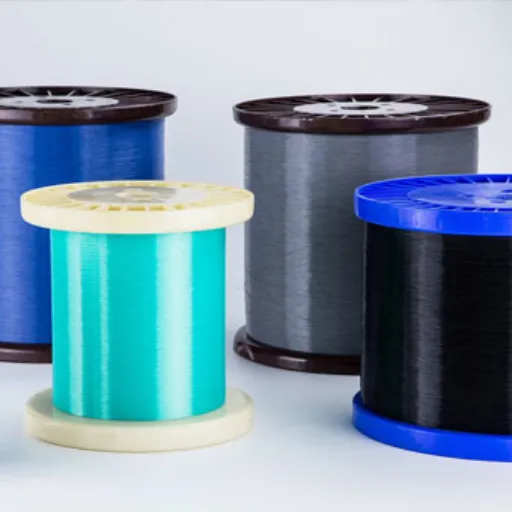Polyester yarn has been a staple for use in knitting, crafts, and fashion design, thanks to its versatility, durability, and low price tag, allowing for a wide variety of creations. Be it an experienced designer or a beginner nurturing creative thoughts, this excellent material holds the promise of great innovation and artistic expression. In this article, we reveal the very attributes of polyester yarn that bind creators to its embrace and examine the myriad uses, along with the reasons it remains a favorite in many project types, from cozy home décor to high-street fashion. Prepare to learn how this fiber will transform your approach to your next creative undertaking!
Introduction to Polyester Yarn
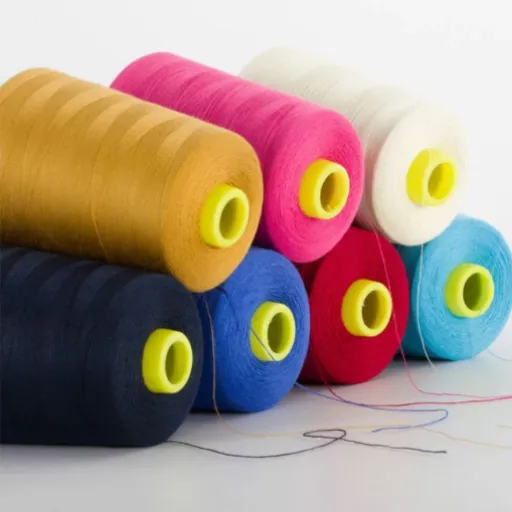
Polyester yarn is a hard-wearing, versatile yarn formed out of synthetic polymers, with petroleum as its primary source. It is strong, resistant to stretch, shrinkage, and wrinkling; therefore, it finds applications in many industries. Being lightweight and economically priced, it finds its primary application in fashion, home décor, and crafts. Polyester yarn is relatively easy to maintain and retains colors well, offering long-lasting hues that make it a good choice for both beginners and experienced crafters alike.
The Versatility of Polyester Yarn in Knitting
Dyeing polyester yarn is a highly sought-after technique among knitting aficionados for its exceptional utility and performance. It maintains a consistent texture, suitable for any pattern, whether intricate or simple. Creation thereby ensures that the articles can maintain their shape and appearance over time, even with heavy use and washing.
Such a yarn can be used for a variety of easy-to-construct items, ranging from knitting hats and scarves to blankets and sweaters. It also blends well with many other fibers, such as cotton or wool, making the final product even softer and more functional. Polyester yarn offers quality and ease, making it indispensable in the world of knitting, whether for personal use or sale.
Key Characteristics of Polyester Yarn
- Durability: Polyester yarn is relatively resistant to breakage, although it will stretch and shrink, and may lose its shape with prolonged use. It is, therefore, an excellent choice for heavier items that require long-lasting durability.
- Moisture Resistance: Polyester is hydrophobic, rejecting moisture and preventing the formation of mold and mildew.
- Color Retention: It holds dye very well, producing bright colors that do not fade quickly over time.
- Low Maintenance: Polyester yarn-made articles are machine washable and dry fast, making them really easy to maintain.
- Versatility: Polyester yarn can be used for almost any knitting or crocheting project and blends wonderfully well with other fibers for customized results.
- Cost-Effectiveness: This fiber, being less expensive than most natural fibers, has grown in popularity among not only hobbyists but also commercial crafters.
Benefits of Using Polyester Yarn
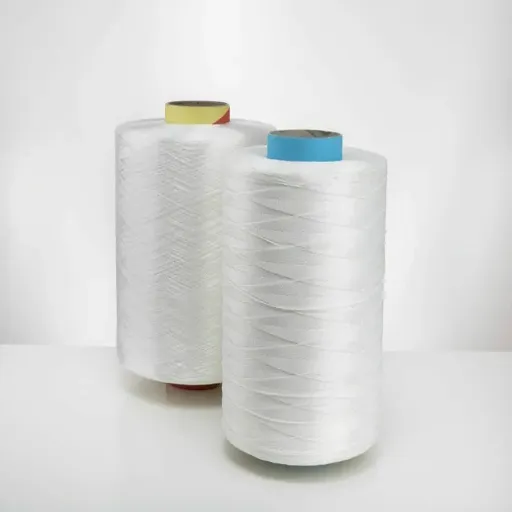
Durability & Strength
Polyester yarn is a much tougher fiber than other yarn types due to its strength and ability to resist wear and tear; therefore, it is suitable for items that require frequent use.
Ease of Care
It is pretty low maintenance, is mostly machine washable, and rarely attains any shrinking or stretching.
Color Retention
It has an excellent tendency to retain color in dyed projects, ensuring the color remains vivid and long-lasting.
Affordability
A good, cheapest alternative without compromising on quality.
Versatility
Due to its flexibility and ability to blend well with other fibers, it can be used for a wide range of projects, from creating garments to making home décor.
Wrinkle Resistance and Shape Retention
Because it is highly resistant to wrinkles and maintains its shape over time, it is highly valued by its consumers. Natural fibers tend to develop creases, so polyester is chosen whenever the project demands a perfectly smooth finish. It can, after being stretched or compressed, bounce back to its original form, so the design and strong nature of an item stay intact. Being engineered in such a way that repeated use would keep it fresh with a more or less artificial constitution free of any wrinkles.
Resistance to Environmental Factors
Withstanding a multitude of environmental elements, polyester is therefore chosen for various applications. Its synthetic fibers are inherently hydrophobic, thus posing lesser chances of mildew and mold growth in humid conditions. Polyester does not break down easily when exposed to ultraviolet radiation; instead, it allows for the longer retention of color and structure of objects made from it compared to natural fibers. Fading from UV rays is another facet of its durability, as outdoor-use applications such as awnings, outdoor furniture, and apparel require it to withstand such exposure. Low absorption allows polyester to dry quickly, a desirable characteristic valued by industries that require textiles for use in harsh environments.
Comparison of Polyester Yarn with Other Yarn Types
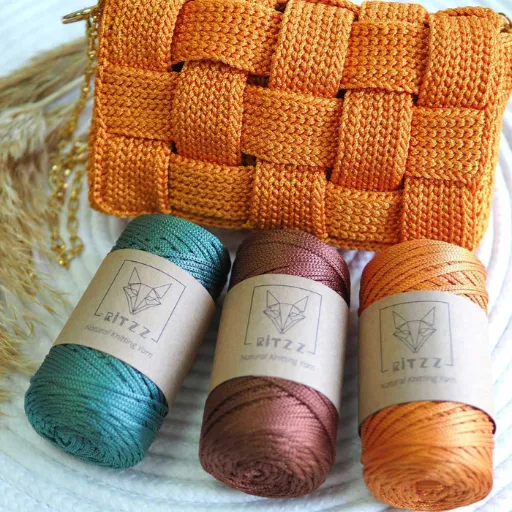
Being durable and moisture-resistant, polyester yarn is among the most affordable yarns available. Whereas natural fibers such as cotton will stretch, shrink, and wrinkle with use and misuse, polyester, on the contrary, does not react to stretching, shrinking, or wrinkling and is, therefore, very easy to care for. Cotton offers excellent breathability and comfort, but it absorbs moisture like a sponge, resulting in slow drying times. Wool, being an amazing natural fiber for insulation, would practically shrink when subjected to harsh care.
On the synthetic front, nylon is another alternative that provides relatively cheaper UV resistance for outdoor applications compared to polyester. Acrylic yarn is a synthetic option that is lightweight and soft, yet does not rival polyester in terms of strength and resistance to wear. When considering aspects such as wear, resistance, and price, polyester emerges as a truly versatile yarn.
Polyester Yarn vs. Acrylic Yarn
| Key Point | Polyester Yarn | Acrylic Yarn |
|---|---|---|
| Durability | Highly durable, resists wear and tear | Moderate durability, less wear-resistant |
| Softness | Less soft, smoother texture | Softer, mimics wool-like feel |
| Breathability | Less breathable, retains heat | More breathable, better airflow |
| Moisture Resistance | Dries quickly, resists water absorption | Absorbs moisture, slower to dry |
| Warmth | Moderate warmth, retains heat | Excellent insulator, mimics wool warmth |
| Ease of Care | Machine washable, wrinkle-resistant | Easy care, but may pill over time |
| Cost | Affordable, widely available | Affordable, slightly cheaper than polyester |
| Eco-Friendliness | Recycled options available, non-biodegradable | Petroleum-based, non-biodegradable |
| Applications | Activewear, home textiles, and industrial use | Sweaters, blankets, and cozy garments |
| Texture | Smooth and sleek | Fluffy and wool-like |
Polyester Yarn vs. Natural Fibers
| Key Point | Polyester Yarn | Natural Fibers |
|---|---|---|
| Durability | Highly durable, resists wear and tear | Moderate durability, prone to damage |
| Softness | Smooth texture, less soft | Naturally soft, varies by fiber type |
| Breathability | Less breathable, retains heat | Highly breathable, ideal for comfort |
| Moisture Resistance | Dries quickly, resists water absorption | Absorbs moisture, slower to dry |
| Eco-Friendliness | Recycled options available, non-biodegradable | Biodegradable, renewable resources |
| Ease of Care | Machine washable, wrinkle-resistant | Requires gentle care, prone to shrinking |
| Cost | Affordable, widely available | Higher cost, varies by fiber type |
| Applications | Activewear, home textiles, and industrial use | Luxury clothing, bedding, and accessories |
| Texture | Smooth and sleek | Natural, varies (e.g., wool, silk) |
| Appearance | Shiny, synthetic finish | Matte or natural sheen |
Applications of Polyester Yarn in Garment Design
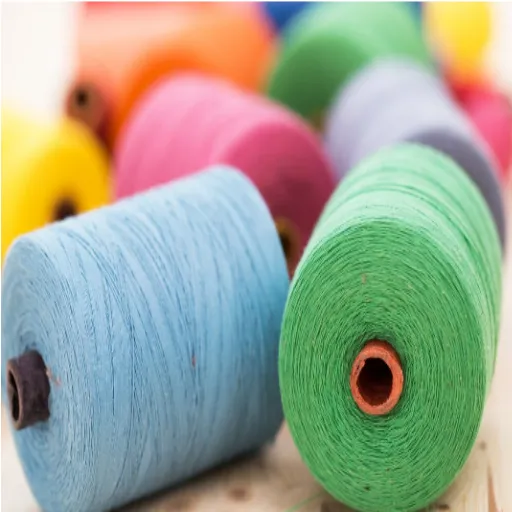
Being durable, adaptable, and affordable, polyester yarn is one of the most commonly used types of fiber in garment design. It is usually used for activewear because it is light, moisture-wicking, and does not stretch or shrink. For casual wear, such as T-shirts and dresses, the polyester chosen is usually the wrinkle type and has excellent color retention. At other times, it is blended with natural fibers, such as cotton, to provide comfort to the wearer while maintaining durability. It can thus be adapted to produce a wide range of garments, including both casual and performance wear.
Fashion and Apparel Uses
Polyester is highly popular in the fashion and apparel industry due to its versatility and usefulness. According to the latest search trends data, words such as “polyester clothing benefits” and “polyester blend outfits” are among the most frequently searched items by users, indicating their interest in this material. In this respect, consumers should be aware of the durability of polyester, its ability to retain bright colors, and the ease of cleaning. These aspects align well with the contemporary lifestyle, where everything is expected to be convenient without compromising on style. Polyester has also come to be viewed through the lens of sustainability, thanks to the innovative technologies that have gained momentum over time and continue to do so, including recycled polyester and sustainable processes.
Home Textiles and Decor
Polyester has been the most sought-after fabric over time, as it is commonly used in home textiles and decor. A frequently asked question regarding polyester home textiles is, “Is polyester good for home decor items like curtains and upholstery?” On its merits, polyester could indeed be an ideal choice for such purposes. It is strong enough to cope with daily rigors and tears. It is resistant to wrinkling and shrinking, two qualities that would otherwise cause home decor items to look shabby over time. In the past, the production of polyester did not allow for a wide range of textures and finishes. Nowadays, the varieties of textures and finishes on offer make it well-suited to contemporary design concepts. Additionally, polyester is perhaps the most cost-effective option for enhancing home interiors, making it a viable choice in terms of both overall functionality and style.
Choosing the Right Polyester Yarn for Your Projects
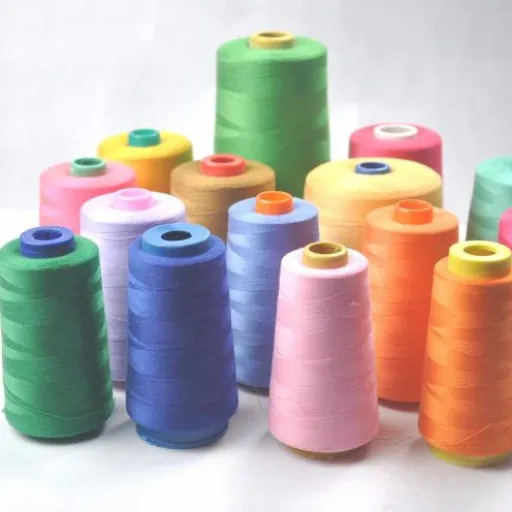
Make the right polyester yarn decision for your projects based upon these points:
- Purpose of the Project: Think about the kind of durability, flexibility, or soft texture that a project requires in a yarn. Decoration usually calls for finer and softer yarns, while designs carrying some weight prefer sturdier yarns.
- Yarn Weight and Thickness: This refers to selecting the appropriate yarn weight based on the weight required for your project. For lighter yarns, delicate designs should be the safest choice, while a heavier type may impart structure and weight.
- Finish and Style: Find a theme of the texture or finish-simply this could be glossy, matte, and so on-so that it suits your design aesthetics.
- Ease of Maintenance: If it will be used daily or requires frequent cleaning, opt for machine-washable options.
- Budget: Polyester yarn is available in a wide range of price points, so choose one that fits your budget while meeting your quality requirements.
Factors to Consider When Selecting Yarn
When choosing yarn, it is essential to consider both creative and practical aspects to ensure the yarn best suits a particular project. Below are the primary considerations:
Identifying High-Quality Polyester Yarn
A sample of quality polyester yarn should be made of durable grime, especially with a nice texture and finish. I tend to look for yarns that feel soft to the touch and are consistently thick, as this would ensure easy handling and even finishing in all my projects. There needs to be a check for tensile strength to know if it could withstand regular use without breaking. I also consider brands that are generally recognized for their good quality production standards and customer reviews to make an informed decision.
Reference Sources
These are five professional and authoritative reference sources on the subject of “polyester yarn” on which you can rely to check your article:
- Structure–Property Relationship of Different Types of Polyester Industrial Yarns
An investigation into the structural and property differences among various types of polyester yarns and those of high-tenacity and high-modulus yarns. - Yarn Features Extraction Using Image Processing and Computer Vision
Concerned with polyester and cotton yarn quality and parameterization through advanced image processing techniques. - A Study on the Suitability of Yarn Numbers for Recycled Polyester Fiber
Studies the suitability of recycled polyester fiber in various yarn counts and its applications. - Polyester Fibres: Today and Tomorrow
Provides information on the world production of polyester yarns and their applications across various industries. - Polyester Fibers
Deals with the production, properties, and applications of polyester yarns for textile and industrial products.
Frequently Asked Questions (FAQs)
What is polyester yarn?
Polyester yarn is a man-made fiber made from synthetic polymers. It is known for its durability, elasticity, and resistance to wrinkles, making it a popular choice in various textile applications, including knitting and weaving.
How does polyester yarn compare to cotton yarn?
While both polyester and cotton yarns have their benefits, polyester yarn is generally more durable and wrinkle-resistant. Cotton yarn, on the other hand, is often softer and more breathable, making it suitable for different types of projects and garments.
Can polyester yarn be used for chunky knit projects?
Yes, polyester yarn can be used for chunky knit projects. Its elasticity and strength allow for a variety of chunky designs, providing a soft texture and vibrant appearance while maintaining its structure over time.
What care instructions should I follow for polyester yarn garments?
Polyester yarn garments are generally easy to care for. They can usually be machine-washed in warm water and dried on a low heat setting. To avoid damage, it’s best to use a gentle cycle and avoid high temperatures while ironing.
Is polyester yarn made from a sustainable source?
Polyester is usually derived from petroleum-based products, making it a less sustainable option compared to natural fibers. However, recycling processes have been developed that utilize plastic bottles and other liquid waste to produce polyester yarn, offering a more environmentally friendly alternative.
What variety of yarns can I create by mixing polyester with other fibers?
Mixing polyester yarn with other fibers, such as cotton or chenille, can create unique combinations that enhance the characteristics of the final product. This enables improved texture, elasticity, and durability, resulting in a diverse range of yarns suitable for various crafting needs.
How is polyester yarn manufactured?
The manufacturing process of polyester yarn involves spinning polyester filaments into threads. This process includes melting the polymer, extruding it through spinnerets, and then cooling and solidifying the strands into usable yarns. The resulting yarn can be dyed and treated to create specific textures and colors.
What are the benefits of using polyester yarn in crafting?
Polyester yarn is an excellent choice for crafting due to its durability, resistance to fading, and ease of care. It is also often more inexpensive than natural fibers, making it accessible for a wide range of projects without compromising on quality.
Does polyester yarn attract dust and dirt?
While polyester yarn can attract dust due to its static properties, its smooth texture makes it easier to clean compared to other fibers. Regular maintenance and care can help reduce the accumulation of dust and keep your knitted or crocheted items looking fresh.








